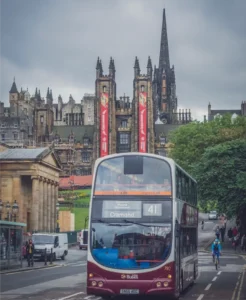Electric motorbikes and mopeds will soon become the norm on UK roads as the government today (14 July 2022) sets out a range of measures to mark a year of success since the Transport Decarbonisation Plan was introduced.
The plan set out the UK’s world-leading ‘greenprint’ to create cleaner air, healthier communities and tens of thousands of new green jobs across the UK.
The progress one year on today shows almost 7,500 extra electric vehicle chargepoints have been installed, supporting the 900,000 green vehicles that are on UK roads, and over 130 new walking and cycling schemes have been funded.
The production of zero emission vehicles alone has the potential to support 72,000 green jobs worth up to £9.7 billion in gross value added by 2050.
To mark its one-year anniversary, the government is launching a new public consultation to accelerate the transition to zero emission travel by phasing out the sale of new fossil-fuelled motorbikes and moped by 2035, or even earlier for some vehicles.
A further public consultation, Course to Zero, is being launched seeking views on the best route to net zero emissions by 2050 for the UK’s domestic maritime sector. This will help inform the government’s future actions to achieve full decarbonisation across UK’s vital domestic shipping industry.
Transport Minister Trudy Harrison said: “Across road, rail, sea and air we have taken decisive action to reduce harmful emissions while enabling innovation and growing the economy.
“We have provided certainly to both the industry and consumers through investment to stimulate a new market to reduce the need for fossil fuels.”
Alongside the consultations, the Department for Transport is announcing funding for a competition to help industry develop the zero emission motorcycle supply chain in the UK. This will help create a manufacturing base for small, emission free vehicles and could lead to thousands of new jobs across the UK.
Successful applicants for the £350,000 fund, will undertake research to support the production and distribution of new, green vehicles within the sector.
Since the Transport Decarbonisation Plan’s launch last year, the government has worked at pace to deliver many of its ambitious commitments, including bringing forward a Zero Emission Vehicle Mandate to set targets for manufacturers to ensure the supply of electric vehicles meets the soaring demand.
Further progress includes:
- announcing plans to support the UK market to increase public electric vehicle chargepoints by tenfold, by the end of the decade as part of the Electric Vehicle Infrastructure Strategy, making public charging cheaper and more convenient than refuelling at a petrol station
- launching the government’s first office dedicated to decarbonising the UK’s maritime industry, known as the UK Shipping Office for Reducing Emissions
- developing a Jet Zero Strategy, which will be launched this year, setting out the roadmap to achieving net zero aviation
- a world leading pledge confirmed at the COP26 Summit to dramatically increase the pace of the global transition so that all new cars and vans are zero emission by 2035 in leading markets and by 2040 globally – this declaration now has 180 signatures, including from 39 countries worldwide and 14 major vehicle manufacturers on top of cities, fleets and investors
- launched a £200 million Zero Emission Road Freight demonstrator programme – supporting industry to develop cost-effective zero emission HGVs and their associated infrastructure
- supported 7 trial hydrogen transport projects to inform future investment decisions and prime export opportunities – the successful trials could lead to increased use of hydrogen-powered transport to move goods and carry out services
- creating Active Travel England, led by Olympic gold medallist Chris Boardman and providing local authorities with £161 million, to deliver 134 first-rate schemes to develop new footways, cycle lanes and pedestrian crossings across England
Helena Bennett, head of climate policy at Green Alliance, said: “The Transport Decarbonisation Plan laid ambitious foundations for the sector to begin its transition to net zero after 30 years in which emissions have stayed largely unchanged.
“It’s promising to see delivery of some of the plan’s goals begin including announcements on a zero emission vehicle mandate and phase out of polluting HGVs, but there is more to be done to keep the sector on track with climate targets, and it’s more important than ever, given the cost of living crisis, that boosts to public transport and walk and cycling infrastructure are prioritised.”
The government is also aiming to improve health and make walking and cycling the natural first choice for shorter journeys by publishing its second Cycling and Walking Investment Strategy. It sets out estimated investment, already committed from various funds, of almost £4 billion into active travel across the government until 2025, including £2 billion announced for active travel in 2020.
This investment will deliver measures including high-quality walking and cycling routes, safer road junctions, cycle training and a Walk to School Outreach initiative.
This progress will help meet the Prime Minister’s ‘Gear Change’ vision to ensure half of journeys in towns and cities are cycled or walked by 2030.
National Active Travel Commissioner, Chris Boardman, said: “If we want to enable millions more people to walk, wheel and cycle for everyday journeys, we need to make the environment feel safe and attractive. Funding and supporting local authorities to achieve that is what Active Travel England will focus on – making local trips easier for everyone to make without having to drive. I’m looking forward to working with councils and other partners to turn this national vision into a reality. Together we can build a pleasant and sustainable future.”






















